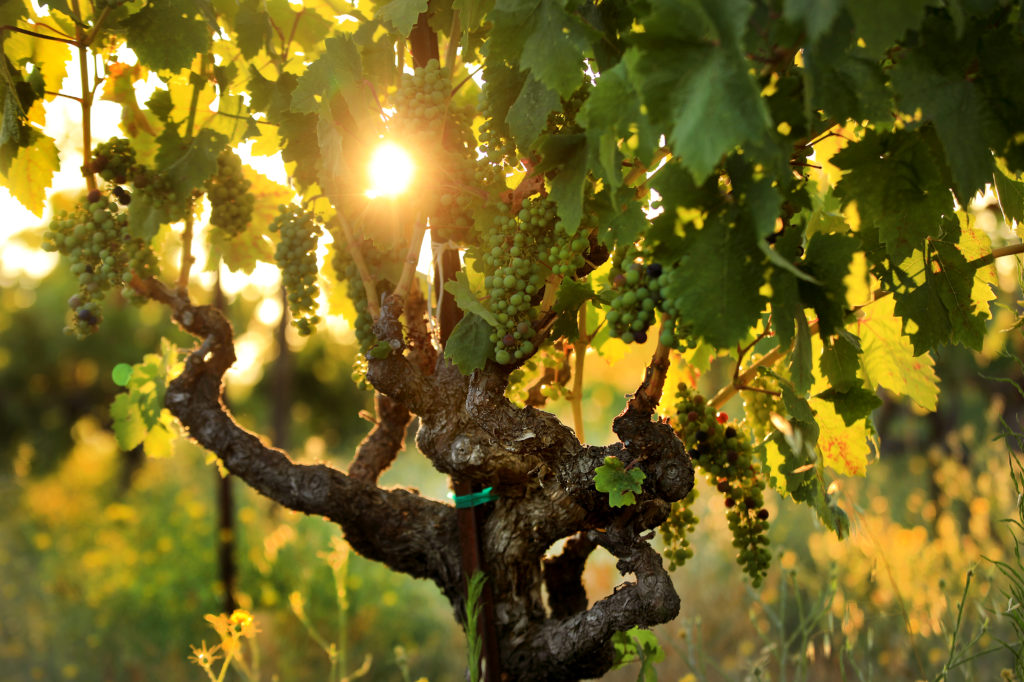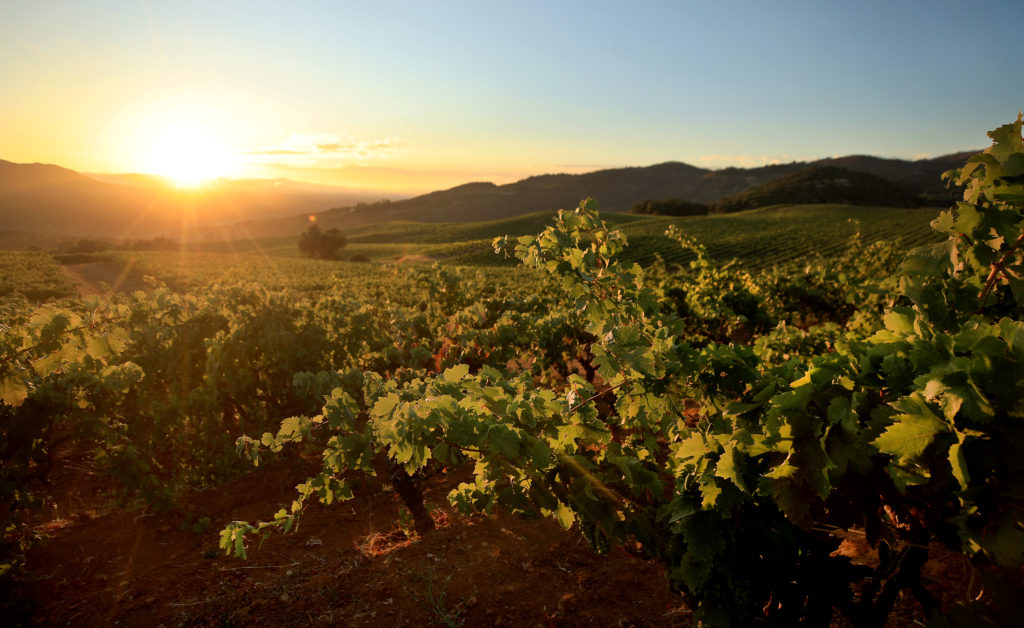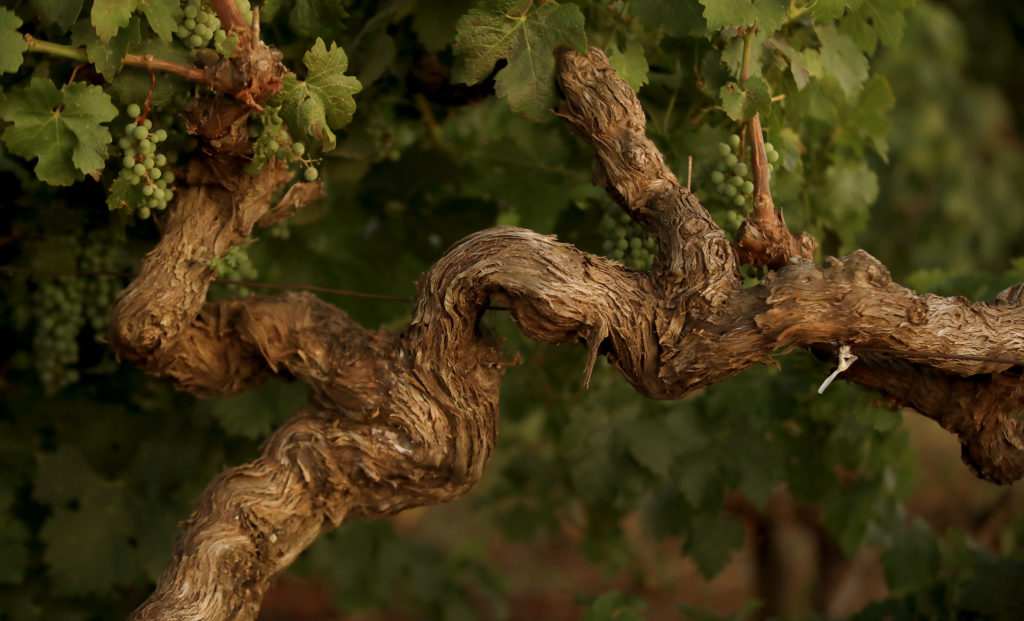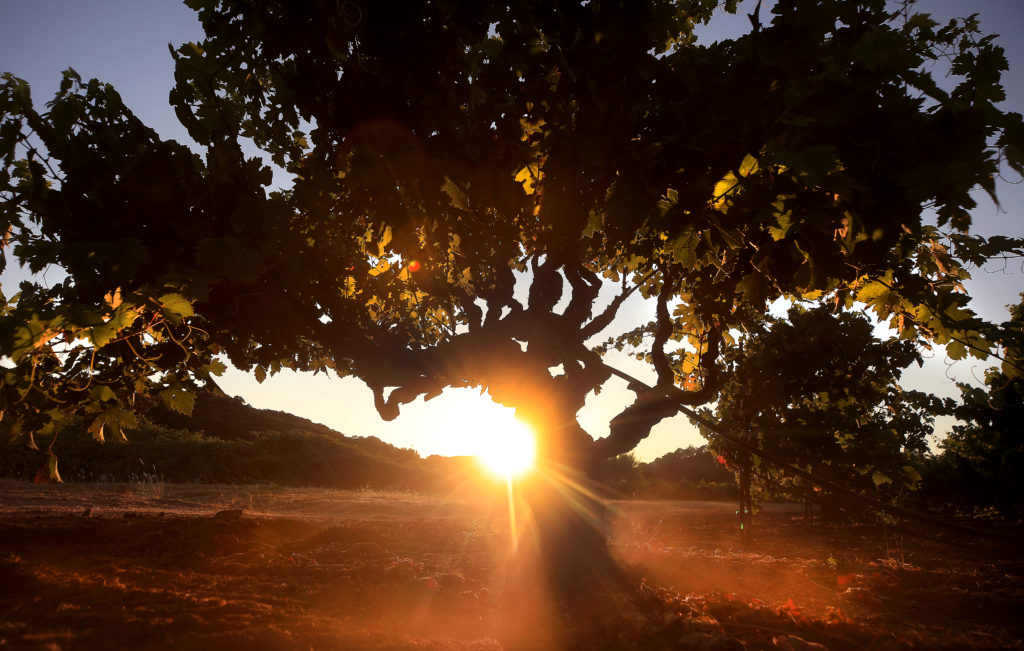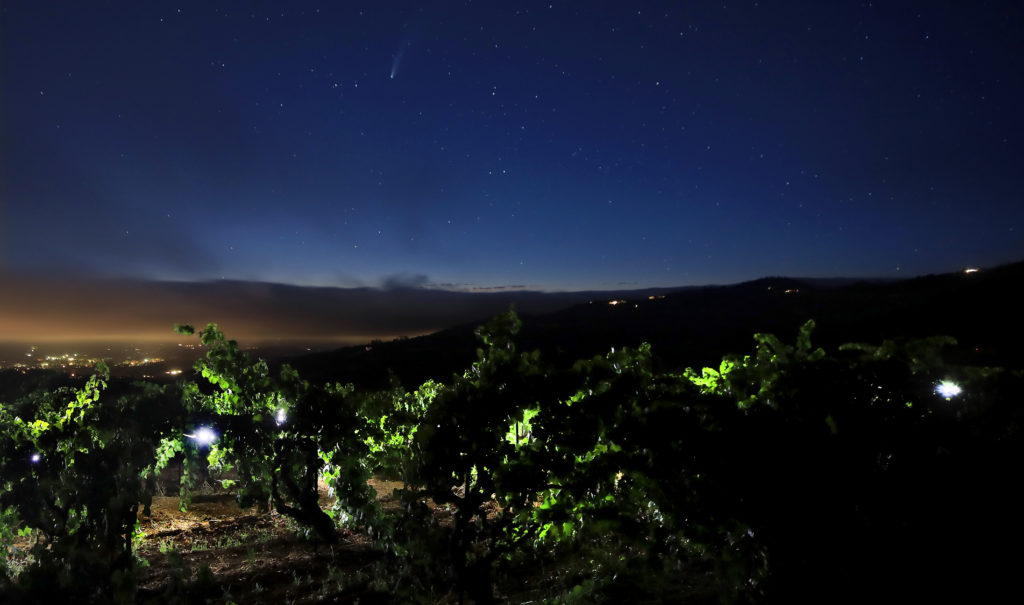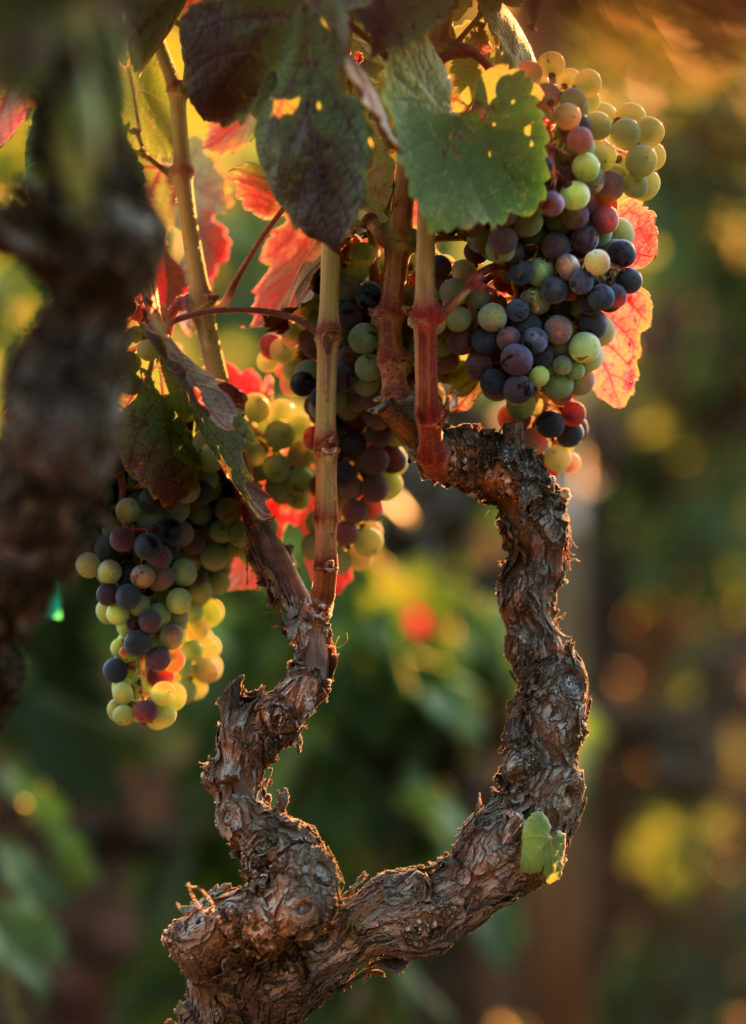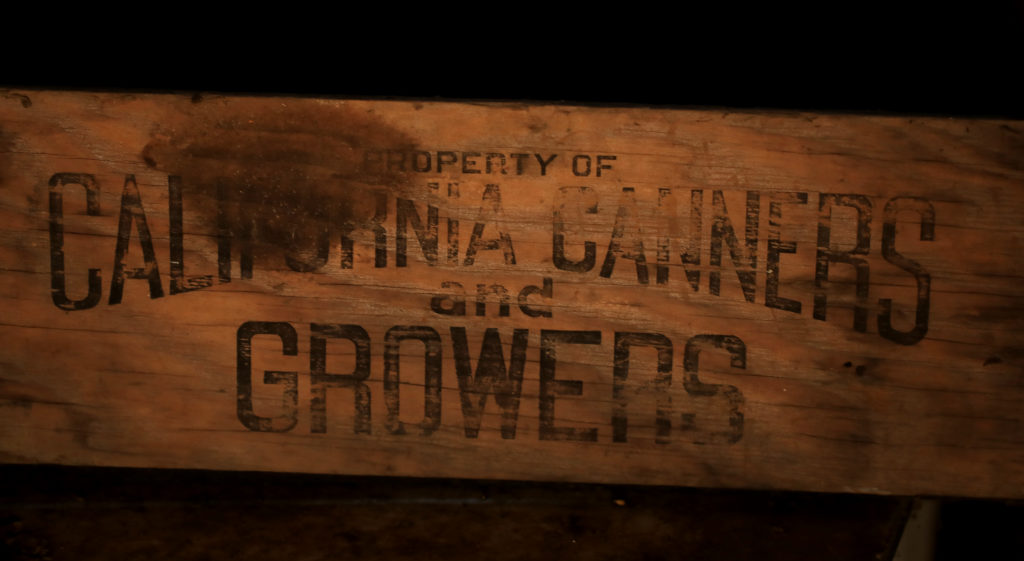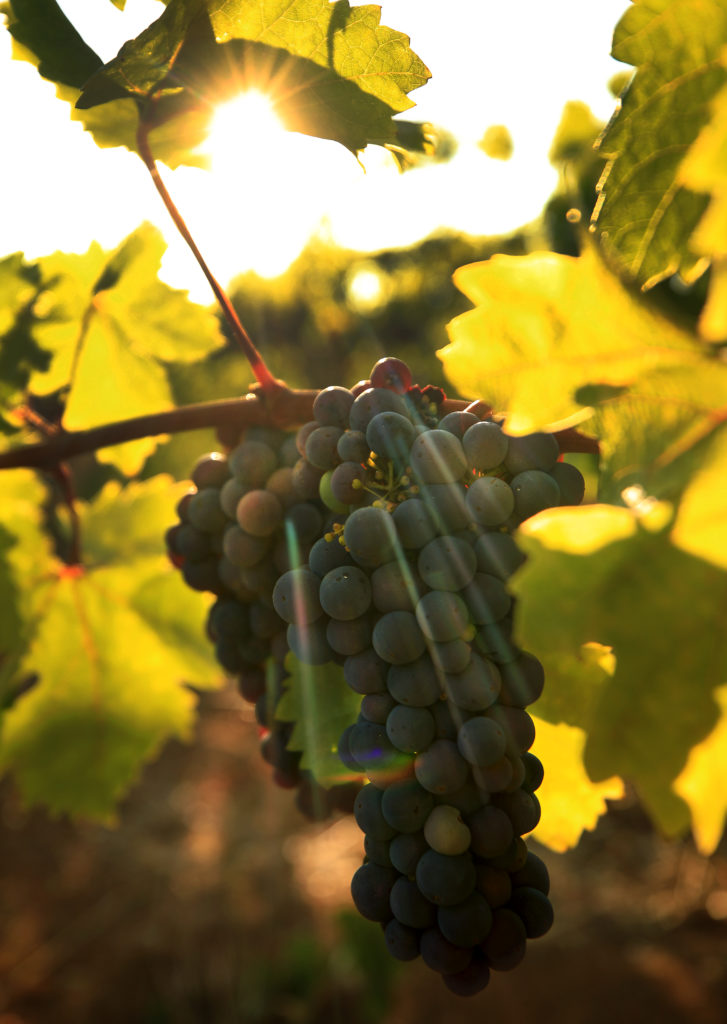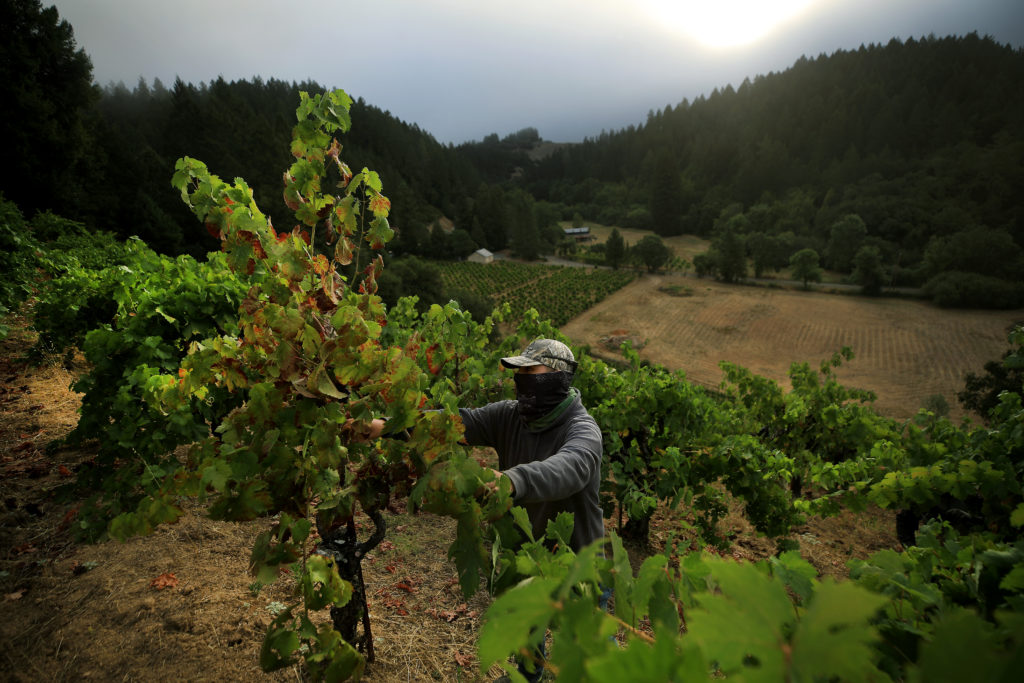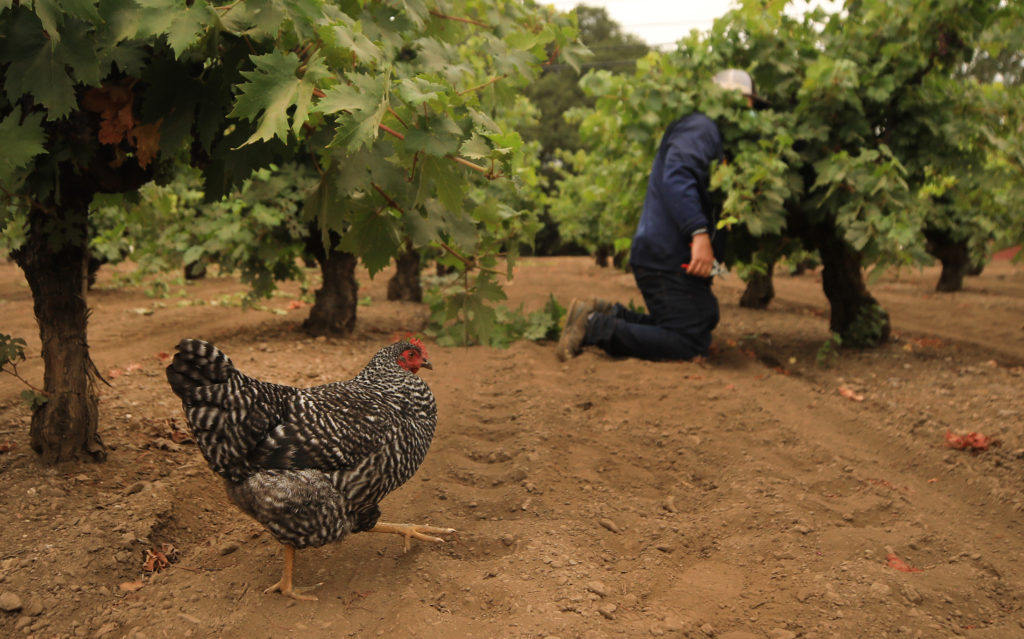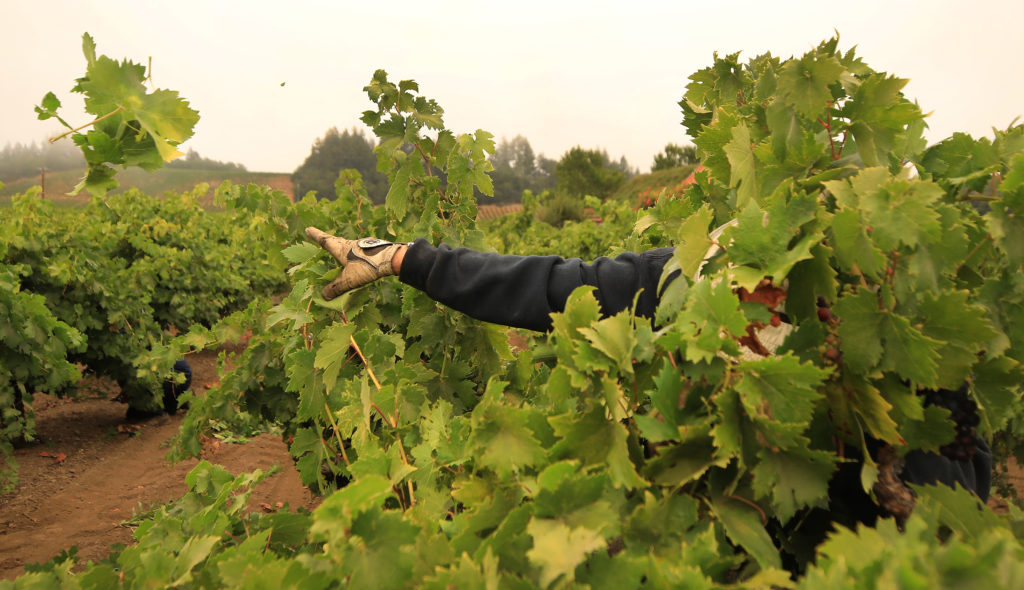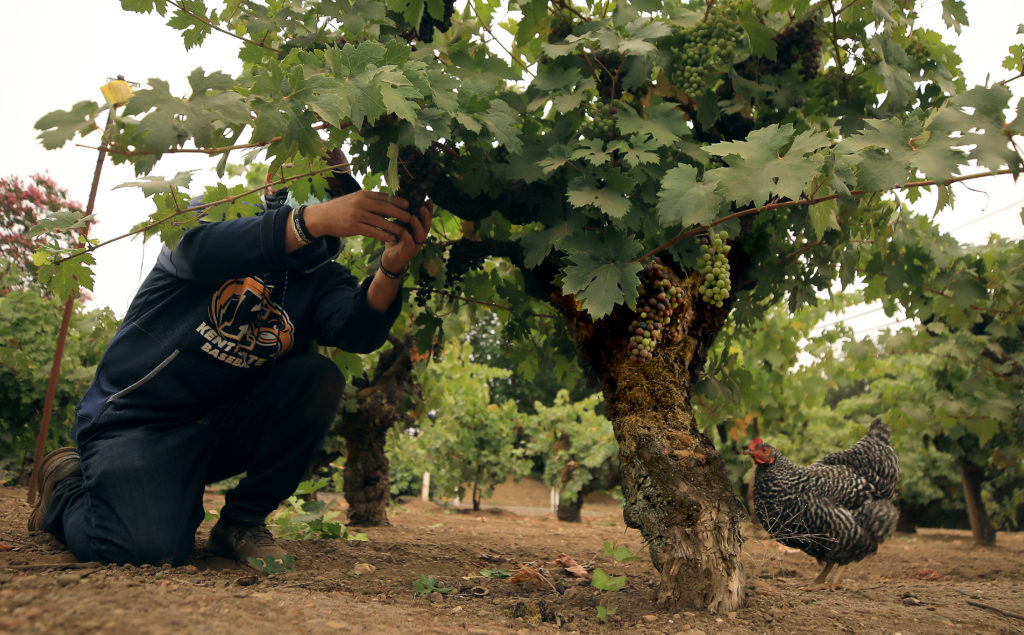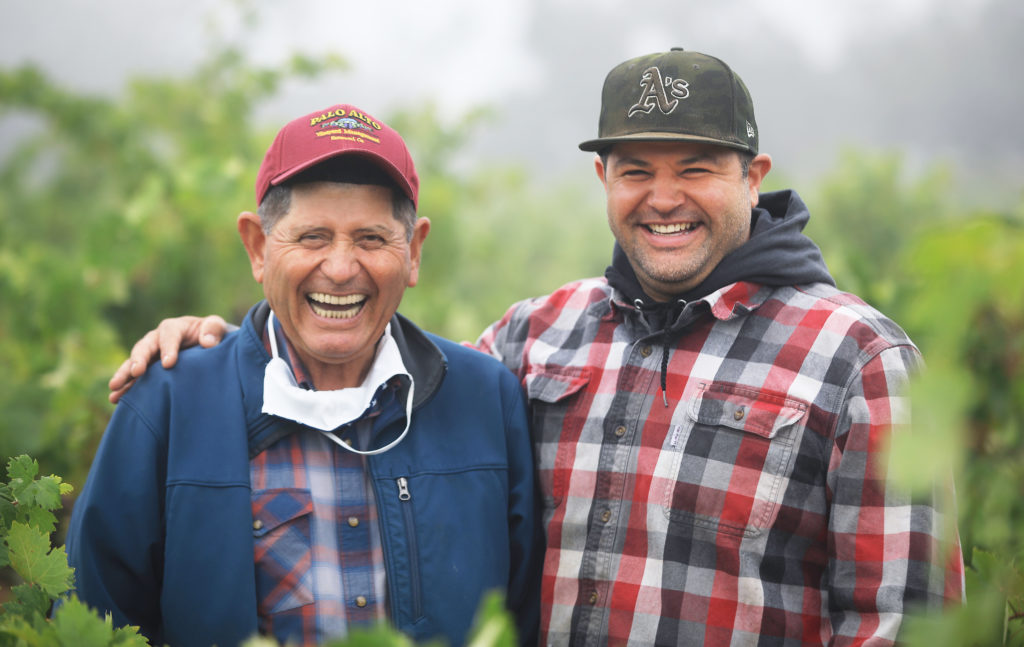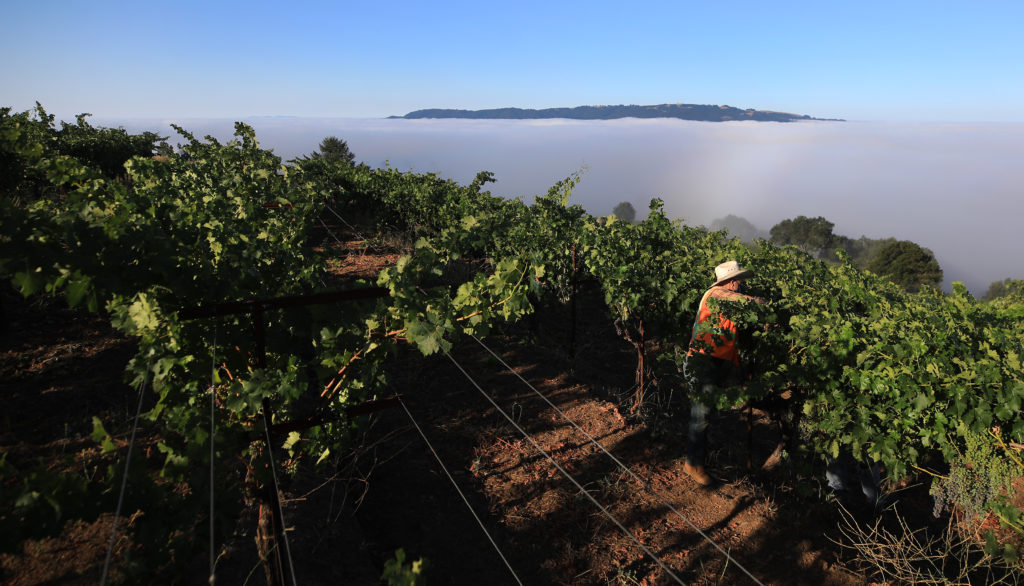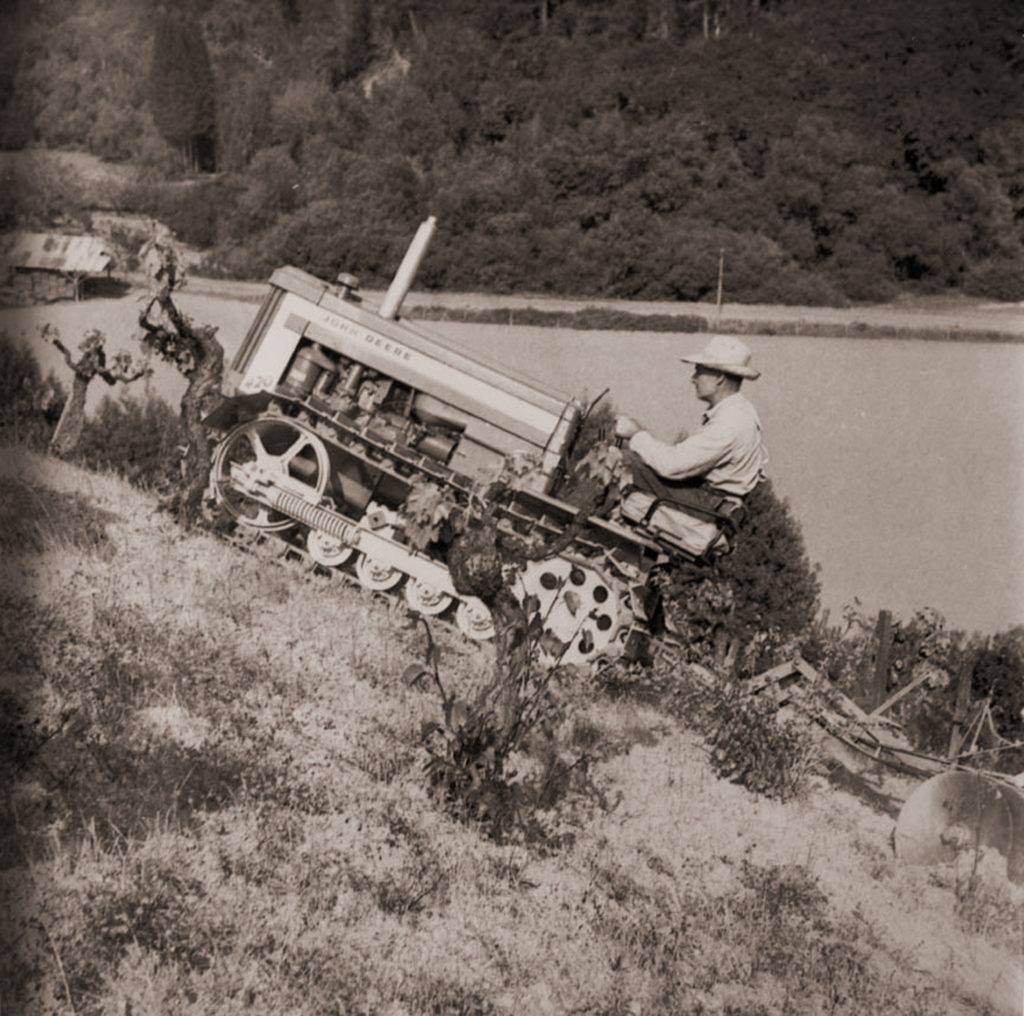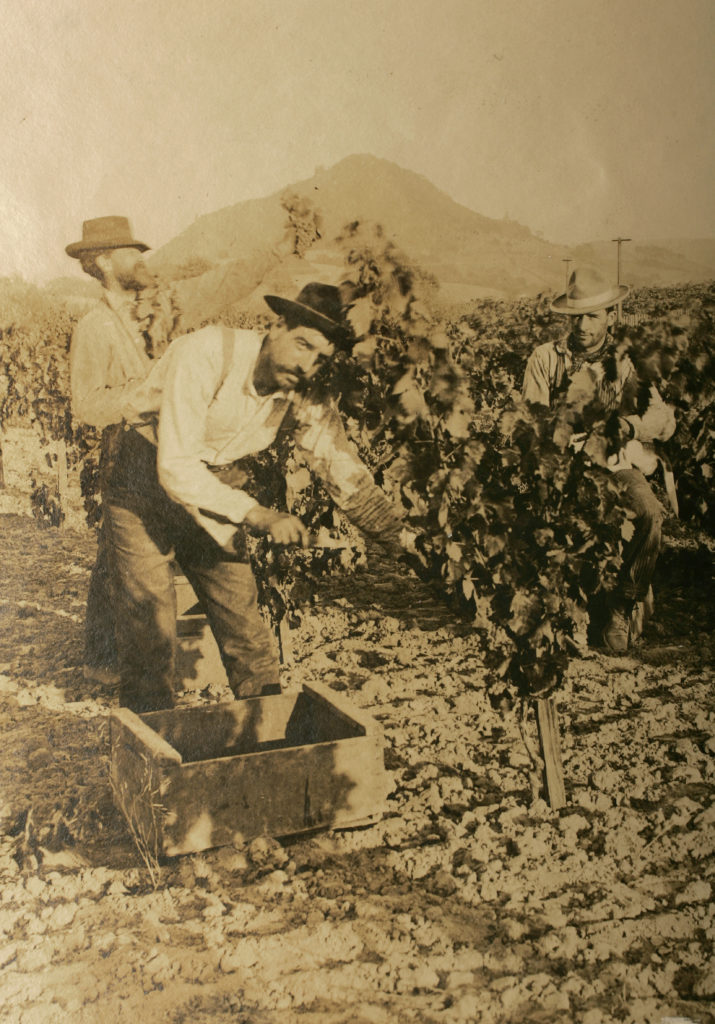Can a vineyard have a soul? For the growers and winemakers who work with Sonoma’s old vines, the answer is yes, it most definitely can. Enduring for generations, our historic vineyards convey a solidity and timelessness that reassures in this moment of uncertainty.
Photographer Kent Porter and writer Stacy Briscoe open a window into the beauty of the old-vine harvest and introduce us to a grassroots group of locals whose stewardship protects this rare and highly prized crop. Click through the above slideshow for photos.
Winemaker Morgan Twain-Peterson of Bedrock Wine Co. has a deep obsession with Sonoma’s gnarliest oldvine vineyards. “These vines have survived two world wars, Prohibition, the change of consumer taste — and they’re still in the ground,” he says with a reverence he comes by honestly, having grown up in a prominent winemaking family. (As the story goes, he made his first wine, a Pinot Noir, at the tender age of 5.)
At a time when many aspects of our lives seem to be in a holding pattern due to circumstances beyond our control, these old vines represent a timelessness that comforts and reassures. Twain-Peterson calls their enduring nature a “Darwinian survival mechanism.” From a grower’s perspective, he explains, there are fundamental reasons these plants thrive: their root structures are deeper, the vines less susceptible to climactic changes, pests, and viruses.
“But I think the reason old vines do so well here is tradition,” he says.
Down a small lane near what is now Valley of the Moon Winery, Twain-Peterson’s 152-acre Bedrock Vineyard represents a chance for the winemaker to follow in the footsteps of history, quite literally. The vineyard was first planted in the 1850s by William Tecumseh Sherman and Joseph “Fighting Joe” Hooker, who both went on to prominent military careers during the Civil War. The vineyard was replanted in 1888 after an epidemic of phylloxera wiped out the original plantings. It’s these same 130-year-old vines that go into Twain-Peterson’s award-winning Bedrock Heritage wines.
Winemaker Mike Officer of Carlisle Winery & Vineyards shares those deep roots, living in the Russian River Valley among 11.2 acres of vines that are nearly a hundred years old. “I like history, genealogy, the people of the past. I like old things,” he laughs. He sources the fruit for his wines from several different historic vineyards around the county, but names Russian River Valley as the area of Sonoma with the most historic plantings and calls his neighborhood, the Piner-Olivet area, old vine “ground zero.”
In 2006 a number of vineyards in the Piner-Olivet area were sold to a private real estate investment firm, which ripped out the vines and re-planted with more profitable Pinot Noir. Officer was heartbroken; he had long-term relationships with many of the vineyards that were ripped out. “Twenty-two acres of beautiful old vines that created wonderful wine, just gone in one day,” Officer recalls. “And even though it was on a path I traveled at least several times a week, I had to take a detour — for many years — because I couldn’t even look at it.”
Officer’s heartbreak and his passion for old-vine vineyards were the impetus for the founding of the Historic Vineyard Society, a grassroots collective of growers and winemakers who protect these vines and promote the use of their fruit. “We were seeing this [ripping out of old vineyards] all over the place,” says Bedrock’s Twain-Peterson, who also helped found the group. “We were losing rare resources without any idea how much we were losing.”
The society started by establishing a registry of historic vineyards and has moved into promotion, hosting tastings of old-vine wines. To be included in the registry, a vineyard has to have been planted more than 50 years ago. At least a third of the vines must be traceable back to the original planting date.
“It’s all stewardship. That’s the difference with historic vineyards,” says Jake Bilbro, owner of Limerick Lane Cellars and a fourth generation Sonoma grower and winemaker. He lives with his family in a home built in 1910, the same year his vines were planted. Bilbro produces Zinfandel and Rhône-style wines from the original plantings and says he’s reached a level of “intune- ship” with both the land and the legacy it holds. “Our vintages are chapters in a story, and it’s a real romance novel,” he says.
Bilbro, too, attributes the success of Sonoma’s old vines to tradition and family. “Vines are resilient and can grow in different conditions, but they won’t unless a family can take care of them and keep the lineage going.”
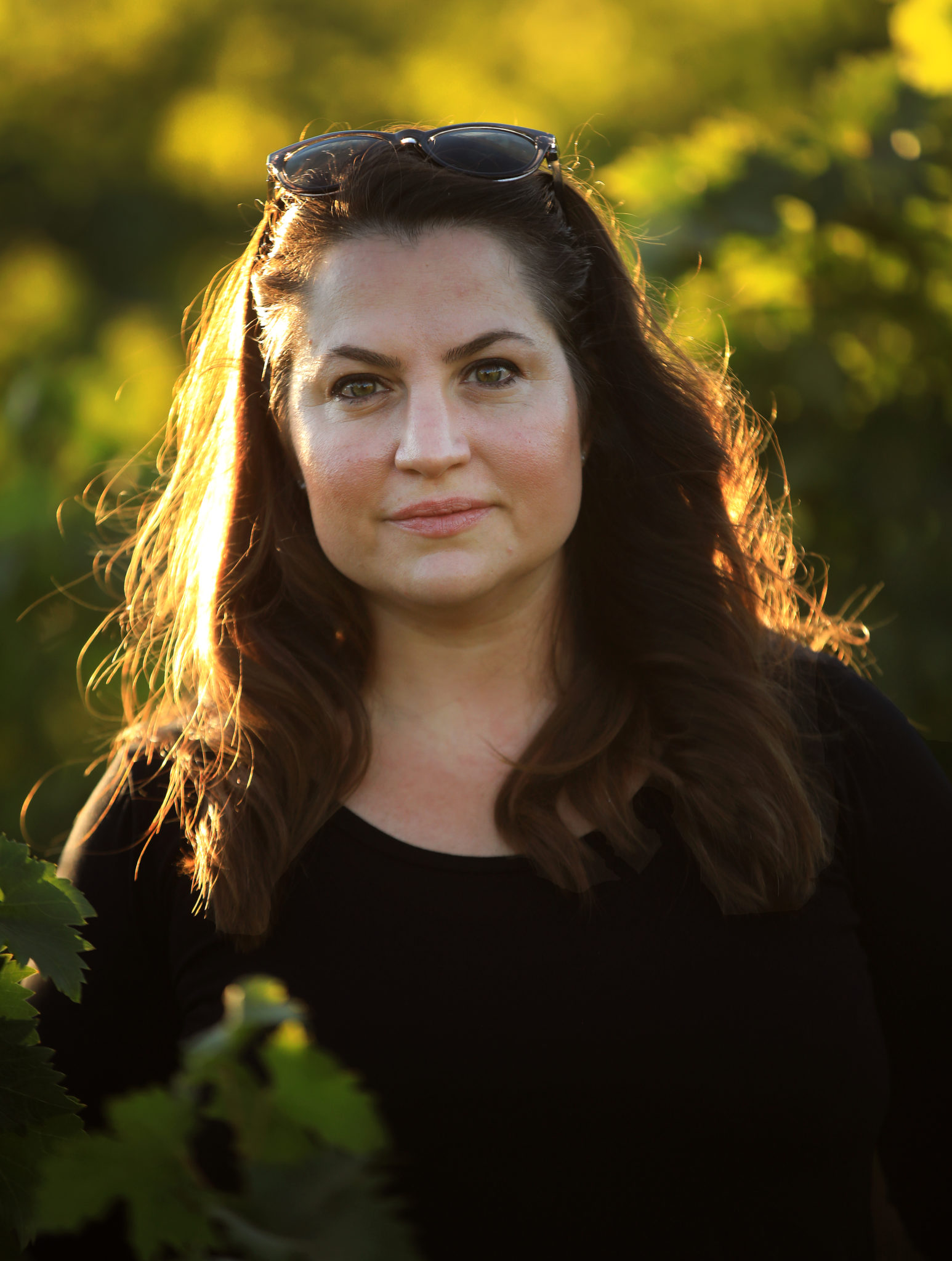
April and Andrew Nalle are caretakers of a Dry Creek Valley vineyard that dates back to the 1880s and has been farmed by their family for five generations, beginning with Andrew’s great-great-grandparents in 1917. “We care so deeply about how the wine tastes. If the flavors don’t match what our family has always stood for, that would be hard to live with,” says April, a viticulturist. She lovingly refers to the taste as “zin-berry” — low alcohol, high acid, and fresh fruit in balance with the full-bodied old-vine Zinfandel. It’s a style of winemaking that necessitates an early harvest and a light touch with the fruit.
“How we make the wine off these vines is something that’s been carried through for generations,” she explains. “Thinking how these vines have been here for 100 years, about the people who made the wine, drank the wine, and shared the wine over family dinners — and being able to continue that tradition — that’s what gives these wines a sense of place.”
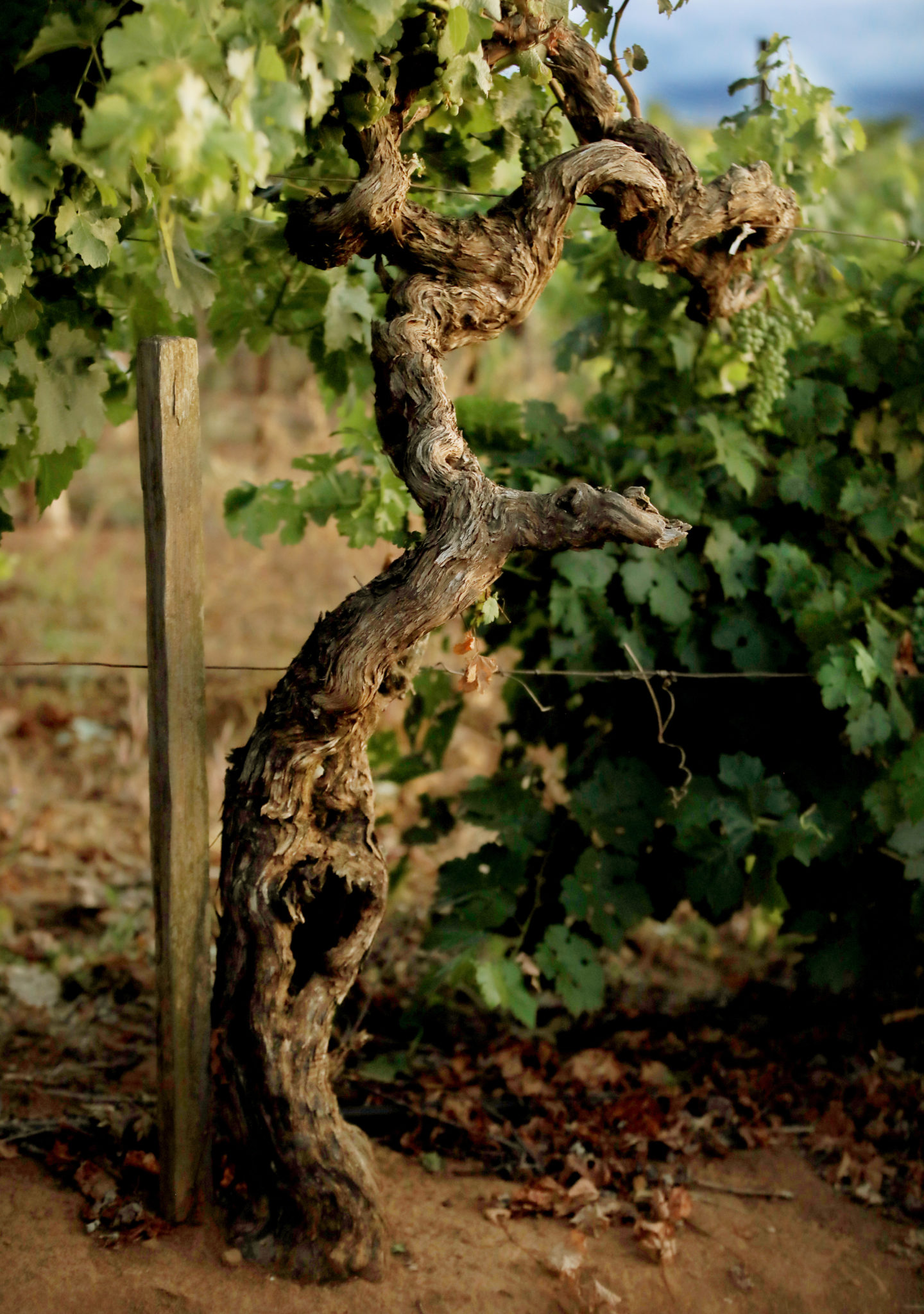
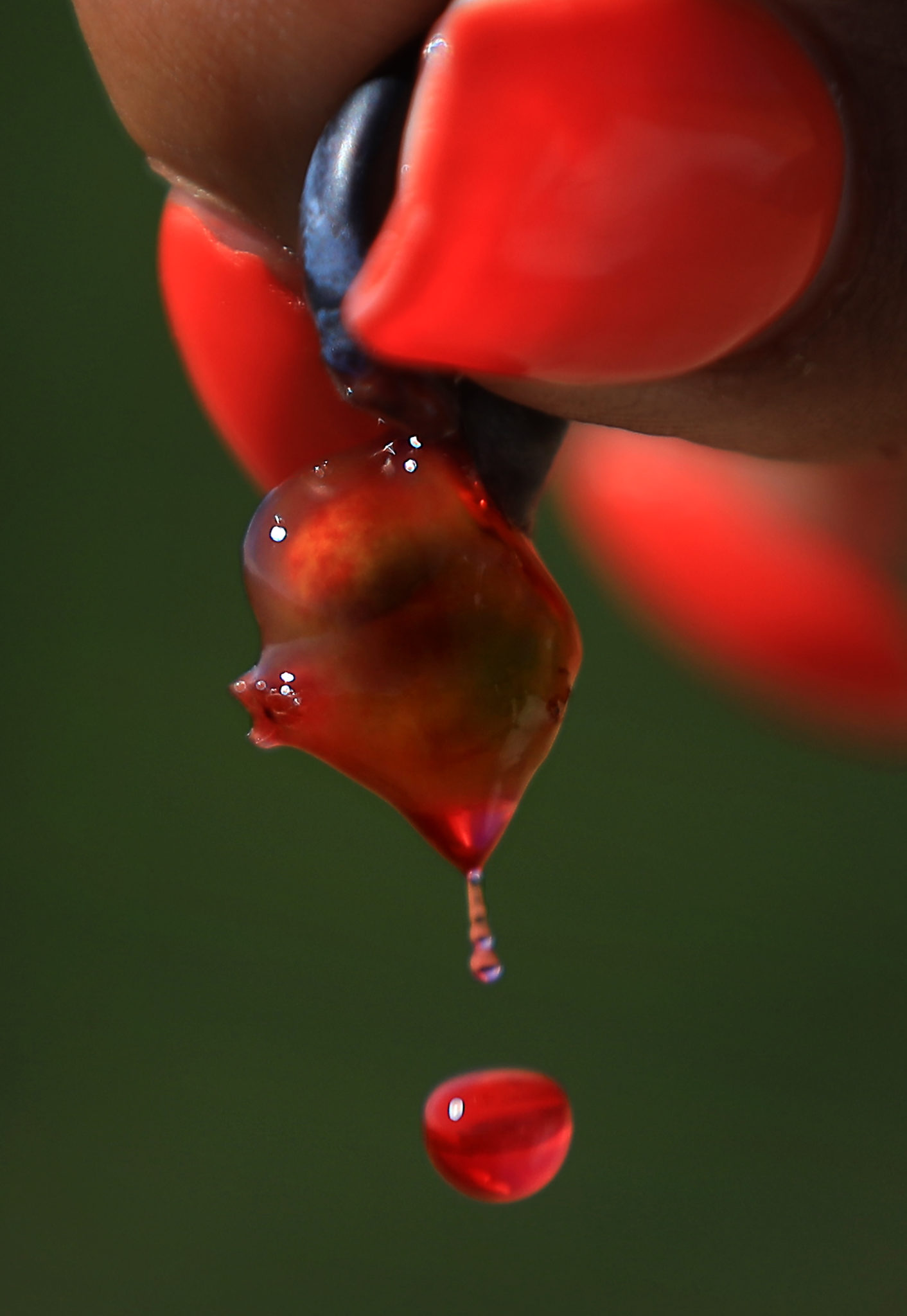
Taste Sonoma County’s Old Vines
The Historic Vineyard Society’s website, historicvineyardsociety.org,
maintains descriptions of Sonoma’s historic vineyards.
RUSSIAN RIVER VALLEY
CARLISLE VINEYARDS
Planted: 1927
To try: Carlisle Winery & Vineyard
2018 “Piner-Olivet Ranches”
Zinfandel, $38
JACKASS HILL VINEYARD
Planted: 1880s
To try: Martinelli 2015 Jackass Hill
Muscat Alexandria, $32 for 375 ml
PAPERA RANCH
Planted: 1934
To try: Williams Selyem 2018
Papera Vineyard Zinfandel, $65
SONOMA VALLEY
BEDROCK VINEYARD
Planted: 1888
To try: Bedrock Wine Co. 2018
“The Bedrock Heritage,” $45
LIMERICK LANE VINEYARD
Planted: 1910
To try: Limerick Lane Cellars 2018
“1910 Block” Zinfandel, $65
OLD HILL RANCH
Planted: 1880s
To try: Bucklin Old Hill Ranch 2018
Ancient Grenache, $40
MONTECILLO VINEYARD
Planted: 1960s
To try: Arnot-Roberts 2017
Montecillo Vineyard Cabernet
Sauvignon, $90
MOON MOUNTAIN
MONTE ROSSO VINEYARD
Planted: 1886
To try: Louis M. Martini 2017
Gnarly Vine Zinfandel, $75
ALEXANDER VALLEY
SEGHESIO HOME RANCH
Planted: 1895
To try: Seghesio Family Vineyards
2017 Home Ranch Zinfandel, $60
DRY CREEK VALLEY
LYTTON ESTATE
Planted: 1900s
To try: Ridge 2017 Lytton Springs
Red Blend, $45
HENDERLONG NALLE VINEYARD
Planted: 1927
To try: Nalle Winery 2018 Estate
Old Vine Zin, $48










